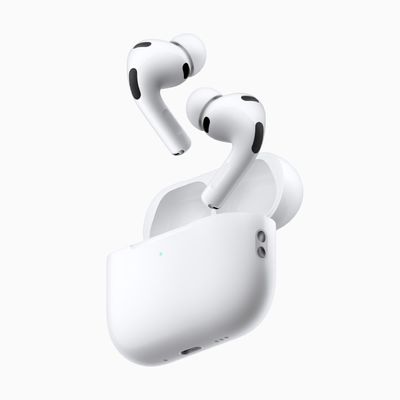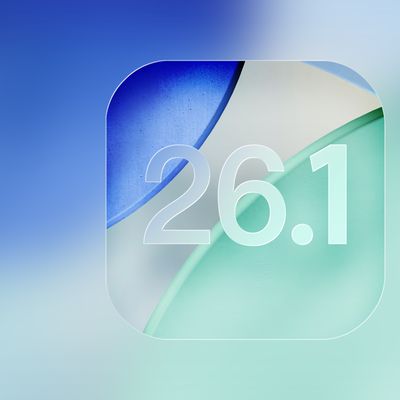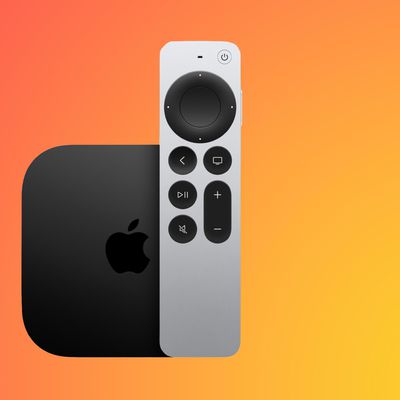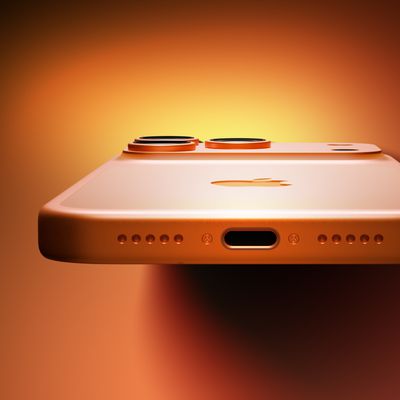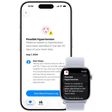Apple's piece of the smartphone ecosystem market fell in eight total territories during the August-October 2017 timeframe, according to new data tracked by Kantar Worldpanel. Echoing numerous stories from earlier this fall that reported people were waiting for the iPhone X and not purchasing an iPhone 8 or iPhone 8 Plus, Kantar's data showed a 7.6 percentage point drop for iOS in the United States when compared to the same year-ago period.

That number was higher in Great Britain where iOS dropped 8.5 percentage points from 2016, and was followed by Japan (down 6.9 percentage points), Germany (down 1.6), France (down 0.6), Italy (down 0.5), and Australia (down 0.2). While iOS dropped 7.6 points in the U.S., Android increased by 8.2 percentage points during this time.
In the same three-month period ending October of last year, 30.1 percent of iOS users in Europe and the U.S. had owned their iPhones for more than two years. iPhone X excitement further affected this statistic as well, increasing to 35.3 percent in 2017 and "signifying considerable pent-up demand" for the iPhone X, according to Kantar.
“It was somewhat inevitable that Apple would see volume share fall once we had a full comparative month of sales taking into account the non-flagship iPhone 8 vs. the flagship iPhone 7 from 2016,” said Dominic Sunnebo, Global Business Unit Director for Kantar Worldpanel ComTech. “This decrease is significant and puts pressure on the iPhone X to perform. Considering the complete overhaul that the iPhone X offers, consumers may be postponing their purchase decisions until they can test the iPhone X and decide whether the higher price, compared to the iPhone 8, is worth the premium to them.”
“As of October 2017, 35.3% of Apple’s installed base customers across Europe and the USA had owned their iPhones for more than two years – up from 30.1% a year earlier and signifying considerable pent-up demand within Apple’s base. In pure value terms, it is likely the iPhone X average selling price will more than make up for a dip in sales of older iPhone models,” Sunnebo added.
While Apple saw a drop in most countries, iOS share grew slightly in China during this period with a 0.5 percentage point increase, suggesting that the company's ongoing efforts to expand its foothold in the Chinese market are paying off. Apple CEO Tim Cook furthered that sentiment during a keynote speech at China's annual state-run World Internet Conference over the weekend, where he said that Chinese developers have earned more selling apps on Apple's iOS platform than developers from any other country.
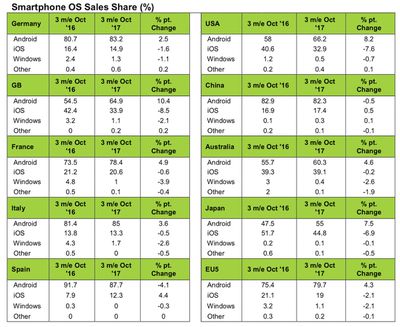
Now that the iPhone X has been out for a month, sales figures for the smartphone have been positive and Apple has continuously improved delivery dates for the device over the subsequent weeks. Research shared by IHS Markit earlier in December reported that early adoption rates for the iPhone X -- looking at its first three weeks on the market -- beat the iPhone 8 and iPhone 7 Plus during similar timeframes. According to TrendForce, this strong iPhone X demand will help push Apple ahead of Samsung in Q4 2017 to become the world's largest smartphone maker.




